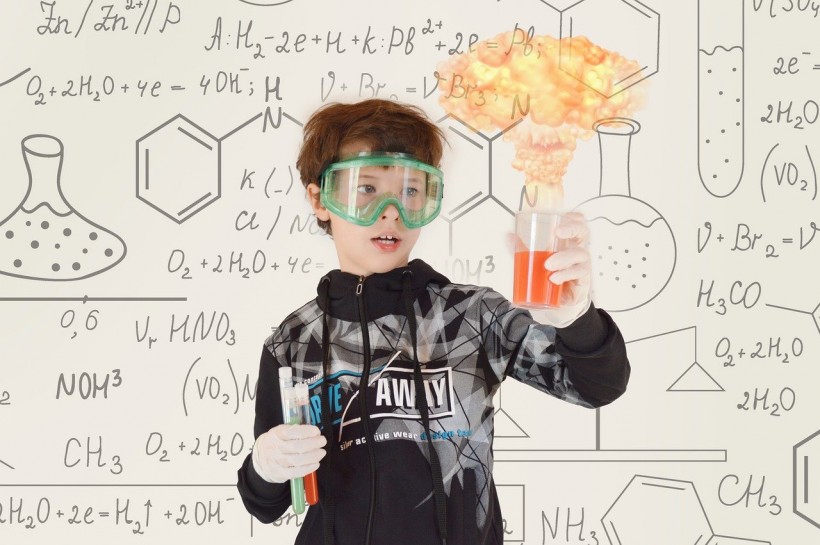This holiday is a great opportunity to introduce to kids some fun Christmas science experiments that they can easily perform. These STEM activities will engage future critical thinkers, problem-solvers, and innovators in science experiments into learning science experiments that may inspire them to venture into science-related careers in the future.

Christmas Science Experiments: 5 Fun and Easy Holiday STEM Activities for Kids
1. Christmas Lava Lamp
The lava lamp experiment is one of the most popular science experiments and a favorite of many kids, with an added Christmas twist to it using red and green coloring or watercolor paints. This experiment is easy and only needs a few items, like oil, water, food coloring, and original Alka Seltzer tablets.
Materials needed:
- oil
- water
- food coloring
- original Alka Seltzer tablets
Procedure:
- Add food coloring to 1/2 cup of oil and water.
- Break the Alka Seltzer into two or three pieces and place them in a small cup or container.
- Slowly add tablets to the oil and water with a food coloring mixture.
According to Fun Learning for Kids website, the oil retains the color of the food coloring since oil and water do not mix. As the tablet reacts with water, it creates bubbles of carbon dioxide that attach themselves to the blobs of colored water and bring them up and pop at the top before falling back into the glass.
2. Fake Snow
According to the Growing a Jeweled Rose website, this fake snow is a good sensory experiment for kids.
Materials:
- shaving cream
- white school glue
- peppermint extract
- iridescent glitter
Procedure:
- Refrigerate the glue overnight.
- After refrigerating, leave it out on the counter for ten minutes.
- Combine equal parts of the chilled glue and shaving cream in a bowl.
- Add glitter and peppermint extract for color and a wintry scent.
3. Candy Cane Oobleck
Materials:
- cornflour
- water
- peppering essence
- red food coloring
Procedures:
- Pour some cornflour into a bowl with cold water until you reach the desired consistency.
- Make two batches of goo (mixture of cornflour and water, and a mixture of cornflour and water with red food coloring)
- Swirl the two mixtures
- Add peppermint essence to give it a Christmas-like feeling.
According to Science Sparks, an oobleck is made of molecules arranged in long chains. The liquid will flow when the long chains are stretched, and they stick together to form a solid barrier when they are forced together.
ALSO READ: Sixth-Graders in Maine Turn Their COVID Experience Into a Science Experiment
4. Reindeer Toothpaste
This reindeer experiment from the Playdough to Plato website will surely make the little scientists excited about chemistry. Here's how to do it:
Materials:
- Clean 12-16 oz plastic bottle
- 1/2 cup of 20-volume (6%) hydrogen peroxide liquid
- Food coloring
- glitter
- 1 tablespoon of dish soap
- Peppermint essence
- 1 tablespoon of active dry yeast
- warm water
- small cup
- baking pan
- funnel
Procedures:
- Mix one tablespoon of yeast with four tablespoons of warm water. Mix until lumps are gone.
- Wait for the yeast to bubble a little.
- Squirt dish soap and add drops of blue food coloring to the plastic bottle.
- Add glitter and peppermint essence to the mixture.
- Add a 1/2 cup of the 6% hydrogen peroxide solution and gently swirl to mix it.
- Pour the yeast solution into the bottle using the funnel.
This experiment will create a foam that will reach the bottle and overflow. As the kids will play with the foam, they might notice that the bottle gets warmer. This is completely safe, and the warm temperature is caused by the reaction between the yeast and hydrogen peroxide to produce oxygen gas that is responsible for the bubble oozing from the bottle.
5. Crystal Tree
There is something magical with growing crystals and that is what Malia Hollowell showed in Playdough to Plato. She emphasized the importance of finding the laundry additive Mrs. Stewart's Bluing for this experiment because other brands will not work.
Materials:
- Mrs. Stewart's Bluing
- A dish that is large enough that can hold the tree
- water
- Ammonia (optional)
- table salt
- green food coloring
Procedure:
- Cut up two cardboard trees at least 3 inches wide by 4 inches tall.
- Cut a notch on the top of one of the trees, and cut the bottom of the other.
- Paint the tree with green food coloring.
- Mix 4 tablespoons warm water, 4 tablespoons salt, 4 tablespoons Mrs. Stewart's Bluing, 2 tablespoons ammonia.
- Place the tree in the solution and wait for the crystals to grow. The first crystals could show within a few hours, but it could take several days before the tree is covered with delicate crystals.
- Add more solution to grow more crystals
Hollowell explained that the solution created a suspension that has solid particles settled out on the cardboard tree due to capillary action or the liquid's ability to defy gravity and flow upwards. Also, a combination of surface tension and adhesive forces created the crystals. Next, the evaporation of liquid molecules with ammonia as catalysis made the solution travel up the cardboard trees and evaporate. Lastly, crystallization occurred after water and ammonia molecules were left through evaporation.
Mrs. Stewart's Bluing act as nuclei or seeds for crystallization, similar to what happens during cloud formation.
RELATED ARTICLE: Top Strange Experiments in Space Made by Humans
Check out more news and information on Science Experiments in Science Times.














